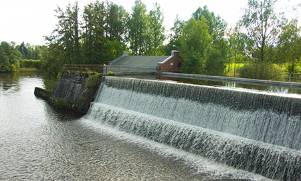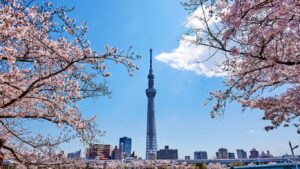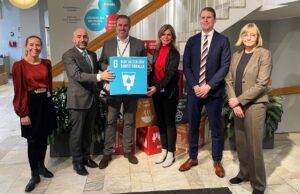Reflections from the World Water Week side event “Water legislation reforms: securing environmental concerns and renewable energy”
From the legislative side of things I’ve heard it being said several times lately – that when most of the actors you engage with are a bit unhappy, you’re probably doing a pretty good job! This statement was something to ponder during the discussions around water legislation and hydropower during the World Water Week.
A typical year hydropower accounts for roughly half of the electricity generation in Sweden and apart from being a renewable source of energy, it has a rather unique attribute in terms of its ability to
balance more intermittent energy sources such as solar and wind. It thus plays a very important and possibly so growing role in the Swedish – and going forward, not only the Nordic but also the European – energy market(s).
That being said, most of the hydropower production in Sweden was developed in the mid-20th century and licensed under older Swedish Law with limited environmental concern. Hydropower production does impact ecosystems and the services they provide, and a large part of Swedish rivers are today seriously altered because of hydropower plants and dams.
The side event highlighted possible implications of water legislation reforms, while emphasizing opportunities for meeting environmental concerns through case studies from Norway and Australia, having gone through similar processes. After a warm welcome by moderator Johan Kuylenstierna, SEI (Stockholm Environment Institute), Stefan Berggren from the Ministry of Environment gave on overview of the Swedish Ministry Inquiry on Water Activities, which delivered its final report in June 2014 to Lena Ek, Minister of the Environment.
Marit Carlsen, NVE (Norwegian Water Resources and Energy Directorate) Norway, spoke of the Norwegian licensing system, where e.g. licenses differ vs Sweden in that they carry an intrinsic time limit. Marit also brought up a NVE/NEA (Norwegian Environment Agency) study about hydropower concessions and prioritizations based on cost/benefit analysis – environmental improvement vs. estimated production loss – in a sense similar to the Swedish strategy for workarounds in hydropower (Strategi för åtgärder i vattenkraften) recently launched by the Swedish Energy Agency and the Swedish Agency for marine and water management.
Pernille Lund Hoel from WWF (World Wide Fund for Nature) Norway, addressed water management challenges such as costs of mitigating measures and an overall lack of knowledge, while highlighting opportunities by taking a holistic approach, prioritizing «win-win» cases by upgrading installations in old power stations and through implementation of best environmental standards in new projects. Russell James from the Murray–Darling Basin Authority (MDBA, Australia) spoke of how the alignment of various factors – amongst them: sound public policy, the ability to build on the legacy of previous reforms and not the least (authors own emphasis) – political support at highest levels, all played an important role in paving the way for water legislation reforms in MDBA.
So, coming back to the beginning while reflecting on the hydropower environmental mitigation measures put forth in the Swedish Ministry Inquiry on Water Activities, it’s perhaps not too far off to think that the authorities are doing a pretty good job!








